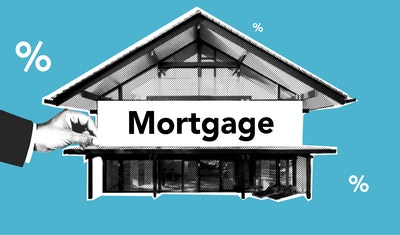7 Challenges The Self Employed Face When Trying to Get a Loan

In the U.S., there are more than 44 million self-employed people, adding up to 30 percent of the workforce, according to Forbes.
The number of self-employed people in the U.S. is growing, posing the question, why are there so many challenges for people seeking a loan.
The guidelines for self-employed loans have changed in recent years to reflect the growing number of self-employed people, but challenges remain for those seeking a loan of any kind.
1. SHowing Additional Documents
A problem many self-employed people see when they apply for a loan is the amount of information the underwriter of their loan wants to see.
Many entrepreneurs diversify their company into different areas, meaning they have funds arriving from different sources.
Both automated and human underwriters want to make sure they see as much income and growth from your business as possible, meaning documents supporting every funding source should be obtained and submitted for evaluation.
2. There are no Set Rules
One of the difficulties of obtaining a loan when you are self-employed is the lack of overriding rules and regulations. Bankrate explains every lender has the power to create their own rules and regulations for self-employed people to follow when applying for a loan.
The lack of clear rules can make it difficult when you are trying to find the best self employed loans by looking at different options from many companies. You may have submitted papers with one company but find you are asked for evidence from a different lender.
3. Calculations are made from Tax Returns
Unforeseen issues, such as the COVID-19 pandemic of 2020, can slow the income stream of an entrepreneur at any time.
When you make your application for a loan, you may feel you are in a profitable period of time. A mortgage or loan provider will ask you for two years of tax returns to show the income you have received over this period.
The Seattle Times reports this will allow your loan provider to calculate an average of your earnings over the period to calculate your loan. The calculations for a self-employed person differ from those of an employee who will receive a stated income loan.
4. Improve your Credit Score
Credit scores are an important part of obtaining any loan with a score of 720 or above usually required.
Reaching a credit score of 720 can be difficult when you are self-employed, particularly in the current economic climate. Paying your bills on time and having several open credit accounts can make a big difference to your chances of obtaining a loan.
5. Only Include Taxable Income
You may receive income from several sources through the business you are operating for yourself. These sources can be diverse and take many forms, but your potential lender will use their own calculations to make sure you can afford the loan you are applying for.
Your loan provider will take a look at your sources of income and determine what is taxable, which is the only type of funding your provider will accept. You may believe your income each month totals a specific figure that a loan provider does not.
When you begin the process of applying for self-employed loans, you should ask your loan officer which sources you can declare on your application.
6. Prove your Business Exists
You may possess bank statements and tax returns you feel show the income you receive from your stated business when applying for a loan.
Each loan company has different rules, with some choosing to ask for proof your business exists at the time of your application. The business world is changing and you can prove the existence of your business in several ways, including a live business website.
Another option is to ask your clients and customers for signed affidavits stating they are working with your business regularly.
7. Your Debt to Income Ratio
When the economy is not as strong as it has been in the past, lenders will ask for a higher downpayment when applying for a mortgage.
Having cash available as a downpayment can be a difficult part of your loan application, but this can be achieved by lowering your debt to income ratio.
A debt to income ratio of 43 percent or lower is the challenging target for any self-employed person to achieve.






